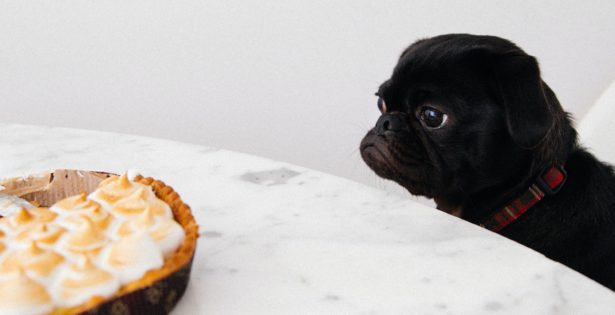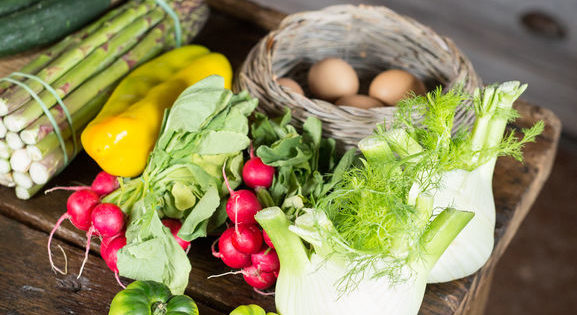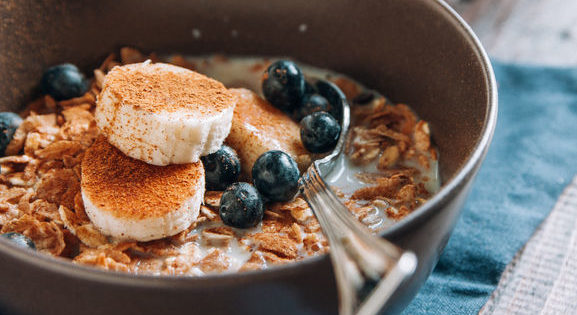WP_Query Object
(
[query] => Array
(
[category__in] => Array
(
[0] => 25
)
[post__not_in] => Array
(
[0] => 7239
)
[posts_per_page] => 50
[ignore_sticky_posts] => 1
[orderby] => desc
[_shuffle_and_pick] => 3
)
[query_vars] => Array
(
[category__in] => Array
(
[0] => 25
)
[post__not_in] => Array
(
[0] => 7239
)
[posts_per_page] => 50
[ignore_sticky_posts] => 1
[orderby] => desc
[_shuffle_and_pick] => 3
[error] =>
[m] =>
[p] => 0
[post_parent] =>
[subpost] =>
[subpost_id] =>
[attachment] =>
[attachment_id] => 0
[name] =>
[pagename] =>
[page_id] => 0
[second] =>
[minute] =>
[hour] =>
[day] => 0
[monthnum] => 0
[year] => 0
[w] => 0
[category_name] => nutrition
[tag] =>
[cat] => 25
[tag_id] =>
[author] =>
[author_name] =>
[feed] =>
[tb] =>
[paged] => 0
[meta_key] =>
[meta_value] =>
[preview] =>
[s] =>
[sentence] =>
[title] =>
[fields] =>
[menu_order] =>
[embed] =>
[category__not_in] => Array
(
)
[category__and] => Array
(
)
[post__in] => Array
(
)
[post_name__in] => Array
(
)
[tag__in] => Array
(
)
[tag__not_in] => Array
(
)
[tag__and] => Array
(
)
[tag_slug__in] => Array
(
)
[tag_slug__and] => Array
(
)
[post_parent__in] => Array
(
)
[post_parent__not_in] => Array
(
)
[author__in] => Array
(
)
[author__not_in] => Array
(
)
[search_columns] => Array
(
)
[suppress_filters] =>
[cache_results] => 1
[update_post_term_cache] => 1
[update_menu_item_cache] =>
[lazy_load_term_meta] => 1
[update_post_meta_cache] => 1
[post_type] =>
[nopaging] =>
[comments_per_page] => 50
[no_found_rows] =>
[order] => DESC
)
[tax_query] => WP_Tax_Query Object
(
[queries] => Array
(
[0] => Array
(
[taxonomy] => category
[terms] => Array
(
[0] => 25
)
[field] => term_id
[operator] => IN
[include_children] =>
)
)
[relation] => AND
[table_aliases:protected] => Array
(
[0] => wp_term_relationships
)
[queried_terms] => Array
(
[category] => Array
(
[terms] => Array
(
[0] => 25
)
[field] => term_id
)
)
[primary_table] => wp_posts
[primary_id_column] => ID
)
[meta_query] => WP_Meta_Query Object
(
[queries] => Array
(
)
[relation] =>
[meta_table] =>
[meta_id_column] =>
[primary_table] =>
[primary_id_column] =>
[table_aliases:protected] => Array
(
)
[clauses:protected] => Array
(
)
[has_or_relation:protected] =>
)
[date_query] =>
[request] =>
SELECT SQL_CALC_FOUND_ROWS wp_posts.ID
FROM wp_posts LEFT JOIN wp_term_relationships ON (wp_posts.ID = wp_term_relationships.object_id)
WHERE 1=1 AND wp_posts.ID NOT IN (7239) AND (
wp_term_relationships.term_taxonomy_id IN (25)
) AND ((wp_posts.post_type = 'post' AND (wp_posts.post_status = 'publish' OR wp_posts.post_status = 'acf-disabled')))
AND ID NOT IN
(SELECT `post_id` FROM wp_postmeta
WHERE `meta_key` = '_pilotpress_level'
AND `meta_value` IN ('','employee')
AND `post_id` NOT IN
(SELECT `post_id` FROM wp_postmeta
WHERE `meta_key` = '_pilotpress_level'
AND `meta_value` IN ('' )))
GROUP BY wp_posts.ID
ORDER BY wp_posts.post_date DESC
LIMIT 0, 50
[posts] => Array
(
[0] => WP_Post Object
(
[ID] => 7035
[post_author] => 3
[post_date] => 2018-05-29 17:43:24
[post_date_gmt] => 2018-05-29 17:43:24
[post_content] =>
Here's a fantastic seasonal favorite from the Best of Dr. Peter Borten articles vault! Enjoy, and please feel free to share YOUR favorite chilled summer treat recipes in the comments below!
--------------------------------------------------------------------------------------------
Ah, summer. The warm, bright sun, birds chirping, bees buzzing, and the sound of ice cream trucks in the air. We crave cold, sweet things like lemonade, ice cream, popsicles, and gelato. Somehow the specialness of summer convinces us to let ourselves and our kids indulge a bit more in the sugar. But summer treats don’t have to be full of refined sugar in order to be yummy and refreshing. Try these healthier variations on summer staples. You’ll feel in the spirit of the season, but don’t have to worry about putting on extra weight at a time of year when you may feel self-conscious of your body in skimpy summer attire.
In Chinese nutritional theory, sour foods are considered to help generate fluids in the body. When we’re hot and thirsty, the sourness of lemonade often feels even more refreshing than plain water. But the sugar just adds tons of extra calories (Minute Maid has about 12 teaspoons of sugar per 16 ounce glass) and makes you feel full if you drink too much. Your first healthier option is simply lemony water. A squirt of lemon (or lime) juice makes me much more enthusiastic about drinking enough water throughout the day. If you’re accustomed to drinking fruit juice daily, you can easily make the switch to lemony water and lose the extra sugar. If you don’t want to bring a lemon to work with you, try getting one of those lemon-shaped squeeze bottles of juice. If you have access to a juicer or juice bar, another excellent substitute for more sugary juices is cucumber juice. It’s wonderfully cooling in the summer. I like it with a squeeze of lemon and/or some fresh mint.
If you really want the sweetness of lemonade, try some stevia powder. It comes from the leaf of the stevia plant, it has no calories, and it’s much sweeter than sugar. You can also use it to sweeten your iced tea. (Bottled, sweetened iced tea, like lemonade, is full of sugar.) Also, you may wish to try a virgin mojito. Crush ice over fresh mint, add lime juice, stevia powder, and sparkling water. Very refreshing. Stevia powder varies a bit in quality. The lower quality stuff often has a bitter aftertaste. Generally, the 100% pure kind (which is also more expensive) tastes the best. A bottle will last you a very long time, because you only need minuscule amounts. You can find it at Trader Joes and natural food stores. It’s not quite as good as sugar, I’ll admit it, but you can get used to it.
Next are popsicles. The least healthy ones are made with high fructose corn syrup, artificial colors and artificial flavors. Slightly better are the fruit juice sweetened kinds, but keep in mind that they’re made with concentrated fruit juice so as to maximize the sugar content. Better still are homemade popsicles made with just plain juice, though they still have a decent amount of sugar. If you want a sugar-free version, I’ve come up with a good recipe that we make at home:
Brew several cups of fruity herbal tea. I like to use Lemon Zinger or Red Zinger (Celestial Seasonings) though there are many other options. Then add some lemon juice and stevia powder until it tastes right and freeze it using popsicle forms (or an ice cube tray with foil or plastic wrap over it and tooth picks poked through). I you really dislike stevia (first, I'd encourage you to try a few different kinds, including both a powdered one and a liquid one), a second healthier option is xylitol crystals, a plant-derived “sugar alcohol.” It tastes more like sugar than stevia, and it’s also somewhat more expensive. However, it’s not calorie-free – xylitol has about 40% fewer calories than sugar. But it doesn’t raise our blood sugar the same way that normal sugar does, so it’s a safe substitute for diabetics. Xylitol has some other interesting properties, such as helping to prevent tooth decay and treating allergies and upper respiratory infections (usually used in nasal spray or gum form for this). While it’s quite safe, consumption of very large quantities can cause gas and/or diarrhea. Another promising sugar alcohol called erythritol has fewer calories than xylitol, the same health benefits, and less potential to disrupt the digestion. You can find erythritol and even combination erythritol+stevia products (including the popular Truvia) at many grocery stores.
One other easy popsicle substitute is simply frozen berries. Blueberries are the most popsicle-like to me, and because they take longer to eat, you won’t eat a whole box at once. We always have some bags of frozen blueberries, raspberries, cherries, strawberries, and blackberries in our freezer. They are my daughter's dessert of choice.
When you really want ice cream, frozen bananas can be a surprisingly close substitute. Break them into small pieces before freezing them. Once frozen, put them in a food processor or a strong blender with a dash of vanilla extract, and puree them. You may need to open the blender a few times and push the banana back down into the blades (I recommend turning it off before doing this) in order to get all the lumps blended. In the end, you should end up with something that has the consistency of sherbet or soft serve ice cream. Kids love it. You can also add other kinds of frozen fruit to change the flavor. Another option is the addition of raw, organic cocoa powder. Usually, the sweetness of the bananas is enough to offset the bitterness of the chocolate, but if not, let the bananas get extra ripe (brown) before you freeze them, or try adding some stevia extract. If it’s not creamy (fatty) enough for you, you can add some coconut milk or pureed cashews and re-chill it for a while to help it thicken.
[post_title] => Healthy and Refreshing Summer Treats
[post_excerpt] =>
[post_status] => publish
[comment_status] => open
[ping_status] => open
[post_password] =>
[post_name] => healthy-refreshing-summer-treats
[to_ping] =>
[pinged] =>
https://www.liveyouraloha.com/reviews/best-portable-air-conditioner/
[post_modified] => 2020-07-28 19:48:49
[post_modified_gmt] => 2020-07-28 19:48:49
[post_content_filtered] =>
[post_parent] => 0
[guid] => http://thedragontree.com/?p=7035
[menu_order] => 0
[post_type] => post
[post_mime_type] =>
[comment_count] => 2
[filter] => raw
[webinar_id] => 0
)
[1] => WP_Post Object
(
[ID] => 8449
[post_author] => 3
[post_date] => 2022-01-14 22:34:39
[post_date_gmt] => 2022-01-14 22:34:39
[post_content] =>
About 25 years ago I worked for a company that made high end sports goggles. Though the front of the building was covered with posters of pro swimmers and skiers and often felt like a party, my days were spent in a back office, sorting and filing paperwork. It was disappointing, but I met a nice guy there and our conversations helped break up the monotony.
Then he started missing work. A day here and a day there. Then a few days at a time. Then he was absent more than he showed up. I knew something was wrong, but I didn’t want to pry. Finally, on one of his rare appearances at work he told me he had been having severe migraine headaches. They were so crippling he was considering quitting his job.
This was just before I started grad school in Chinese Medicine and I didn’t have anything useful to say. I just remember feeling bad for him and being surprised that migraines could be that debilitating. I wish I knew then what I know now. I believe most cases are completely treatable with natural medicine. Here are some of the key treatments that can make a huge difference:
-
- Acupuncture. I’d estimate I can control 80% of migraine cases with acupuncture alone. Other acupuncturists may fare better or worse than that. (You might ask if this is an area of focus for an acupuncturist you’re considering.) Migraines can result from several underlying patterns, but there is always a condition of stagnation in the head (and sometimes neck and upper torso) – which acupuncture is excellent at releasing.
- Massage. Get regular deep tissue massages. Have them focus on your head overall (including your face, jaw, and the base of your skull), the sides and back of your neck, your upper back and chest, your hands, feet, lower back, and abdomen. Between massages do self-massage with a lacrosse ball. Lie on your back on a carpeted floor with bent knees, and place the ball under you, against the inside edge of your shoulder blade. Moving the ball inch by inch, find every single tender spot, and relax into the ball for a minute or two before moving onto the next one.
- Hydrate. Divide the number of pounds you weigh in half and drink that many ounces of water each day, evenly over the course of the day. (For instance, if you weigh 200 pounds, drink 100 ounces of water a day.)
- Avoid Caffeine. Even though caffeine is an ingredient in some headache medications (because it constricts the blood vessels in the head, making them smaller) it’s also a known trigger of migraines for some people. Many migraine cases improve when caffeine is cut out altogether.
- Figure Out What Foods You’re Sensitive to and Avoid Them. The most reliable way to figure out your food sensitivities is by doing an elimination diet (there are numerous books and websites that explain the process) and then systematically reintroducing foods, one at a time, to see what your reaction is. It’s a good idea to reintroduce foods at least 2 days apart, since the migraine may be delayed by a day. Figuring out your sensitivities and eliminating those foods is often a total cure for migraines. It’s worth the work.
- Clean Up Your Diet. Cut out processed foods and eat more live, fresh, healthy, chemical-free foods, prepared by you or someone with a good heart.
- Avoid Aspartame (Nutrasweet / Equal). Some migraines are triggered by this artificial sweetener. I recommend avoiding it even if it doesn’t give you headaches.
- Consider Avoiding MSG. Although it’s been demonized for decades, most people have no trouble at all with MSG. That said, some find they have fewer headaches when they avoid it. You might see it listed in the ingredients as monosodium glutamate, hydrolyzed vegetable protein or soy, or yeast extract. Analogs of MSG also occur naturally in many foods, including hard cheeses, tomatoes, soy sauce, and even breast milk.
- Avoid Getting Hypoglycemic. Many migraines are triggered by a drop in blood sugar. This is common a few hours after eating a meal with lots of simple carbs or sugar. In some folks, the blood sugar goes way up and then comes crashing down, in what is known as “reactive hypoglycemia.” Besides potentially triggering migraines, reactive hypoglycemia can be an early precursor to diabetes, so there are multiple reasons to get this under control. Eat protein with every meal, and eliminate juice and sweets.
- Reduce Your Stress Level. Exercise, breathe, meditate, do yoga, have fun, get counseling, take breaks, get acupuncture and massage . . . just do whatever you have to do to reduce the impact of your stress.
- Try Magnesium. Many migraine sufferers have low levels of magnesium. Try taking 600 mg (you can gradually go up to 1000 mg) in divided doses over the course of each day. The easiest form for most people to take is dissolvable powder such as Natural Calm brand and others. (Watch out for bowel loosening. If it gives you loose bowels, reduce the dose, spread it out more evenly over the course of the day, or try the form known as magnesium glycinate, which is easier on the digestion.)
- Try Direct Pressure on Your Head. One study had participants with migraines wrap an elastic band (with Velcro at the ends so that it could be secured tightly) around their head, covering the most tender spots. They would then place soft rubber discs under the head band at the places of greatest discomfort to apply extra pressure to these spots. 80% of the people reported a major improvement.
- Take a Good B Vitamin Complex. Several of the B vitamins have been shown to be useful for migraines. Just take all of them in one capsule, once or twice a day.
- Try a Chinese Herbal Formula. A practitioner who specializes in Chinese herbal medicine can write you a personalized formula (usually consisting of 8-12 herbs) to resolve the specific underlying pattern(s) implicated in your migraines. I’ve had many patients report great relief or total resolution of their migraines with a good, customized herbal formula.
- Take Frequent Breaks When Looking at Screens. Eyestrain and overexposure to bright light, especially in the blue range, is a common trigger of migraines. Sometimes blue-blocking glasses can help.
- Improve Your Posture. The mechanical stress of poor posture can cause tension in the head and neck that contributes to migraines. This is especially common when looking down for hours at a phone, laptop, tablet, or book. Tuck your chin slightly, drop your shoulders and bring them back, relax your chest, and imagine you’re being lifted by a string from the very top of your head (in line with the tops of your ears).
If you get migraines, I hope these tips are helpful. They aren’t the only useful approaches, of course. I had a patient who used to stick Q-tips up her nose – the whole way up – and felt that made a huge difference. Others like essential oils, cold compresses, or decapitation. I encourage you to give my suggestions a try. Then let me know what happens, or share your own favorite remedies in the comments section below.
Be well,
Dr. Peter Borten
[post_title] => 16 Ways to Treat Migraines Naturally
[post_excerpt] =>
[post_status] => publish
[comment_status] => open
[ping_status] => open
[post_password] =>
[post_name] => 16-ways-to-treat-migraines-naturally
[to_ping] =>
[pinged] =>
[post_modified] => 2022-01-17 20:40:16
[post_modified_gmt] => 2022-01-17 20:40:16
[post_content_filtered] =>
[post_parent] => 0
[guid] => https://thedragontree.com/?p=8449
[menu_order] => 0
[post_type] => post
[post_mime_type] =>
[comment_count] => 4
[filter] => raw
[webinar_id] => 0
)
[2] => WP_Post Object
(
[ID] => 6910
[post_author] => 3
[post_date] => 2018-02-20 18:32:38
[post_date_gmt] => 2018-02-20 18:32:38
[post_content] => In this video, Dr. Peter Borten shares a bunch of easy and yummy variations of "jook" (Chinese for porridge) that will send you on your way feeling nourished and full of energy. If you have any favorite ideas to add, please share them in the comments below!
[post_title] => Talking Wellness with Peter: Eating a Healthy Breakfast
[post_excerpt] =>
[post_status] => publish
[comment_status] => open
[ping_status] => open
[post_password] =>
[post_name] => talking-wellness-peter-breakfast
[to_ping] =>
[pinged] =>
[post_modified] => 2019-07-02 21:42:27
[post_modified_gmt] => 2019-07-02 21:42:27
[post_content_filtered] =>
[post_parent] => 0
[guid] => http://www.thedragontree.com/?p=6910
[menu_order] => 0
[post_type] => post
[post_mime_type] =>
[comment_count] => 6
[filter] => raw
[webinar_id] => 0
)
)
[post_count] => 3
[current_post] => -1
[before_loop] => 1
[in_the_loop] =>
[post] => WP_Post Object
(
[ID] => 7035
[post_author] => 3
[post_date] => 2018-05-29 17:43:24
[post_date_gmt] => 2018-05-29 17:43:24
[post_content] =>
Here's a fantastic seasonal favorite from the Best of Dr. Peter Borten articles vault! Enjoy, and please feel free to share YOUR favorite chilled summer treat recipes in the comments below!
--------------------------------------------------------------------------------------------
Ah, summer. The warm, bright sun, birds chirping, bees buzzing, and the sound of ice cream trucks in the air. We crave cold, sweet things like lemonade, ice cream, popsicles, and gelato. Somehow the specialness of summer convinces us to let ourselves and our kids indulge a bit more in the sugar. But summer treats don’t have to be full of refined sugar in order to be yummy and refreshing. Try these healthier variations on summer staples. You’ll feel in the spirit of the season, but don’t have to worry about putting on extra weight at a time of year when you may feel self-conscious of your body in skimpy summer attire.
In Chinese nutritional theory, sour foods are considered to help generate fluids in the body. When we’re hot and thirsty, the sourness of lemonade often feels even more refreshing than plain water. But the sugar just adds tons of extra calories (Minute Maid has about 12 teaspoons of sugar per 16 ounce glass) and makes you feel full if you drink too much. Your first healthier option is simply lemony water. A squirt of lemon (or lime) juice makes me much more enthusiastic about drinking enough water throughout the day. If you’re accustomed to drinking fruit juice daily, you can easily make the switch to lemony water and lose the extra sugar. If you don’t want to bring a lemon to work with you, try getting one of those lemon-shaped squeeze bottles of juice. If you have access to a juicer or juice bar, another excellent substitute for more sugary juices is cucumber juice. It’s wonderfully cooling in the summer. I like it with a squeeze of lemon and/or some fresh mint.
If you really want the sweetness of lemonade, try some stevia powder. It comes from the leaf of the stevia plant, it has no calories, and it’s much sweeter than sugar. You can also use it to sweeten your iced tea. (Bottled, sweetened iced tea, like lemonade, is full of sugar.) Also, you may wish to try a virgin mojito. Crush ice over fresh mint, add lime juice, stevia powder, and sparkling water. Very refreshing. Stevia powder varies a bit in quality. The lower quality stuff often has a bitter aftertaste. Generally, the 100% pure kind (which is also more expensive) tastes the best. A bottle will last you a very long time, because you only need minuscule amounts. You can find it at Trader Joes and natural food stores. It’s not quite as good as sugar, I’ll admit it, but you can get used to it.
Next are popsicles. The least healthy ones are made with high fructose corn syrup, artificial colors and artificial flavors. Slightly better are the fruit juice sweetened kinds, but keep in mind that they’re made with concentrated fruit juice so as to maximize the sugar content. Better still are homemade popsicles made with just plain juice, though they still have a decent amount of sugar. If you want a sugar-free version, I’ve come up with a good recipe that we make at home:
Brew several cups of fruity herbal tea. I like to use Lemon Zinger or Red Zinger (Celestial Seasonings) though there are many other options. Then add some lemon juice and stevia powder until it tastes right and freeze it using popsicle forms (or an ice cube tray with foil or plastic wrap over it and tooth picks poked through). I you really dislike stevia (first, I'd encourage you to try a few different kinds, including both a powdered one and a liquid one), a second healthier option is xylitol crystals, a plant-derived “sugar alcohol.” It tastes more like sugar than stevia, and it’s also somewhat more expensive. However, it’s not calorie-free – xylitol has about 40% fewer calories than sugar. But it doesn’t raise our blood sugar the same way that normal sugar does, so it’s a safe substitute for diabetics. Xylitol has some other interesting properties, such as helping to prevent tooth decay and treating allergies and upper respiratory infections (usually used in nasal spray or gum form for this). While it’s quite safe, consumption of very large quantities can cause gas and/or diarrhea. Another promising sugar alcohol called erythritol has fewer calories than xylitol, the same health benefits, and less potential to disrupt the digestion. You can find erythritol and even combination erythritol+stevia products (including the popular Truvia) at many grocery stores.
One other easy popsicle substitute is simply frozen berries. Blueberries are the most popsicle-like to me, and because they take longer to eat, you won’t eat a whole box at once. We always have some bags of frozen blueberries, raspberries, cherries, strawberries, and blackberries in our freezer. They are my daughter's dessert of choice.
When you really want ice cream, frozen bananas can be a surprisingly close substitute. Break them into small pieces before freezing them. Once frozen, put them in a food processor or a strong blender with a dash of vanilla extract, and puree them. You may need to open the blender a few times and push the banana back down into the blades (I recommend turning it off before doing this) in order to get all the lumps blended. In the end, you should end up with something that has the consistency of sherbet or soft serve ice cream. Kids love it. You can also add other kinds of frozen fruit to change the flavor. Another option is the addition of raw, organic cocoa powder. Usually, the sweetness of the bananas is enough to offset the bitterness of the chocolate, but if not, let the bananas get extra ripe (brown) before you freeze them, or try adding some stevia extract. If it’s not creamy (fatty) enough for you, you can add some coconut milk or pureed cashews and re-chill it for a while to help it thicken.
[post_title] => Healthy and Refreshing Summer Treats
[post_excerpt] =>
[post_status] => publish
[comment_status] => open
[ping_status] => open
[post_password] =>
[post_name] => healthy-refreshing-summer-treats
[to_ping] =>
[pinged] =>
https://www.liveyouraloha.com/reviews/best-portable-air-conditioner/
[post_modified] => 2020-07-28 19:48:49
[post_modified_gmt] => 2020-07-28 19:48:49
[post_content_filtered] =>
[post_parent] => 0
[guid] => http://thedragontree.com/?p=7035
[menu_order] => 0
[post_type] => post
[post_mime_type] =>
[comment_count] => 2
[filter] => raw
[webinar_id] => 0
)
[comment_count] => 0
[current_comment] => -1
[found_posts] => 25
[max_num_pages] => 1
[max_num_comment_pages] => 0
[is_single] =>
[is_preview] =>
[is_page] =>
[is_archive] => 1
[is_date] =>
[is_year] =>
[is_month] =>
[is_day] =>
[is_time] =>
[is_author] =>
[is_category] => 1
[is_tag] =>
[is_tax] =>
[is_search] =>
[is_feed] =>
[is_comment_feed] =>
[is_trackback] =>
[is_home] =>
[is_privacy_policy] =>
[is_404] =>
[is_embed] =>
[is_paged] =>
[is_admin] =>
[is_attachment] =>
[is_singular] =>
[is_robots] =>
[is_favicon] =>
[is_posts_page] =>
[is_post_type_archive] =>
[query_vars_hash:WP_Query:private] => 66db2b85c5ed1300bc20d1bb8d380ee2
[query_vars_changed:WP_Query:private] =>
[thumbnails_cached] =>
[allow_query_attachment_by_filename:protected] =>
[stopwords:WP_Query:private] =>
[compat_fields:WP_Query:private] => Array
(
[0] => query_vars_hash
[1] => query_vars_changed
)
[compat_methods:WP_Query:private] => Array
(
[0] => init_query_flags
[1] => parse_tax_query
)
)



 Cart
Cart




